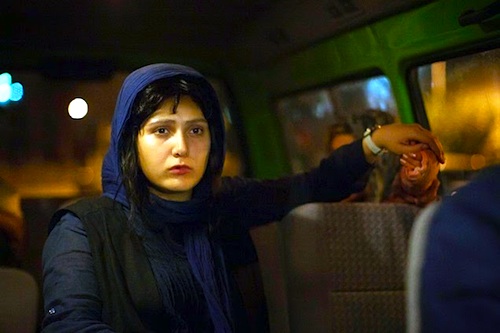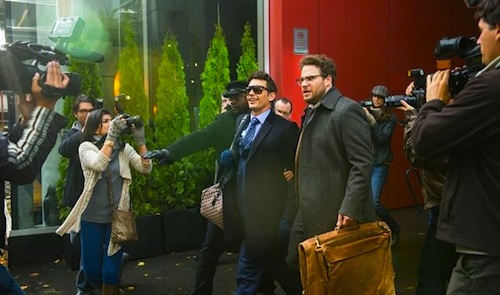By Joe Bendel. Joseph Heller’s Yossarian has nothing on Private Tamura. He is caught in a miserable catch-22 and the only thing that will dislodge him from his vicious cycle will be a further downturn in Japan’s fortunes of war. There is absolutely nothing heroic about combat throughout intense auteur Shinya Tsukamoto’s faithful but bloody remake of Kon Ichikawa’s Fires on the Plain, which screened during Film Comment Selects 2015.
Tamura is suffering from a nasty case of tuberculosis and maybe some mild shell shock. Deemed too sick to serve effectively by his arrogant commanding officer, Tamura is ordered to check into the nearest field hospital on Leyte. However, the medical staff refuses to admit him, considering him too healthy to merit a spot on their disease floor.
Back and forth he trudges between the camp and the hospital, repeatedly being turned away by each, until Allied attacks essentially eliminate either option. Receiving word the Imperial forces have belatedly ordered them all to regroup at Palompon, Tamura falls in and out of small ragtag bands of retreating Imperial soldiers, but his increasingly desperate countrymen might represent a more immediate danger than the Yanks he is supposedly fighting.
The 1959 Plain has to be Ichikawa’s darkest, bleakest film. Tsukamoto does not exactly match its dour existentialism, but he certainly never whitewashes its atmosphere or implications. In terms of tone, the recent Plain could be described as one part Samuel Beckett and two parts Apocalypse Now, but with liberal helpings of severed body parts. Tsukamoto’s Plain is definitely not for the faint of heart, but it is considerably more accessible than the full-on assault to the senses delivered by his Tetsuo series.

It is safe to say vanity had nothing to do with Tsukamoto’s decision to direct himself as Tamura. He is never flashy, but it is grimly compelling to watch the soul steadily seep out of him. You absolutely believe his is just a shell of a person, which is certainly some kind of performance.
Plain is truly serious stuff, intended for discerning audiences, but there might be enough gore to placate his loyal cult-following. It covers all the bases Ichikawa did, nearly beat for beat, yet it is unquestionably and readily identifiably a Tsukamoto film. Together with his co-cinematographer Satoshi Hayashi, Tsukamoto gives his slow descent into tropical madness a distinctively sweaty, feverish, and slightly surreal look that is equally transfixing and disconcerting. One of the better remakes of a genuine classic you will see in sometime, Tsukamoto’s Fires on the Plain is recommended for those who appreciate uncompromising anti-war cinematic statements after its screening at the Walter Reade, as part of this year’s Film Comment Selects.
LFM GRADE: B+
Posted on February 25th, 2015 at 9:55pm.




